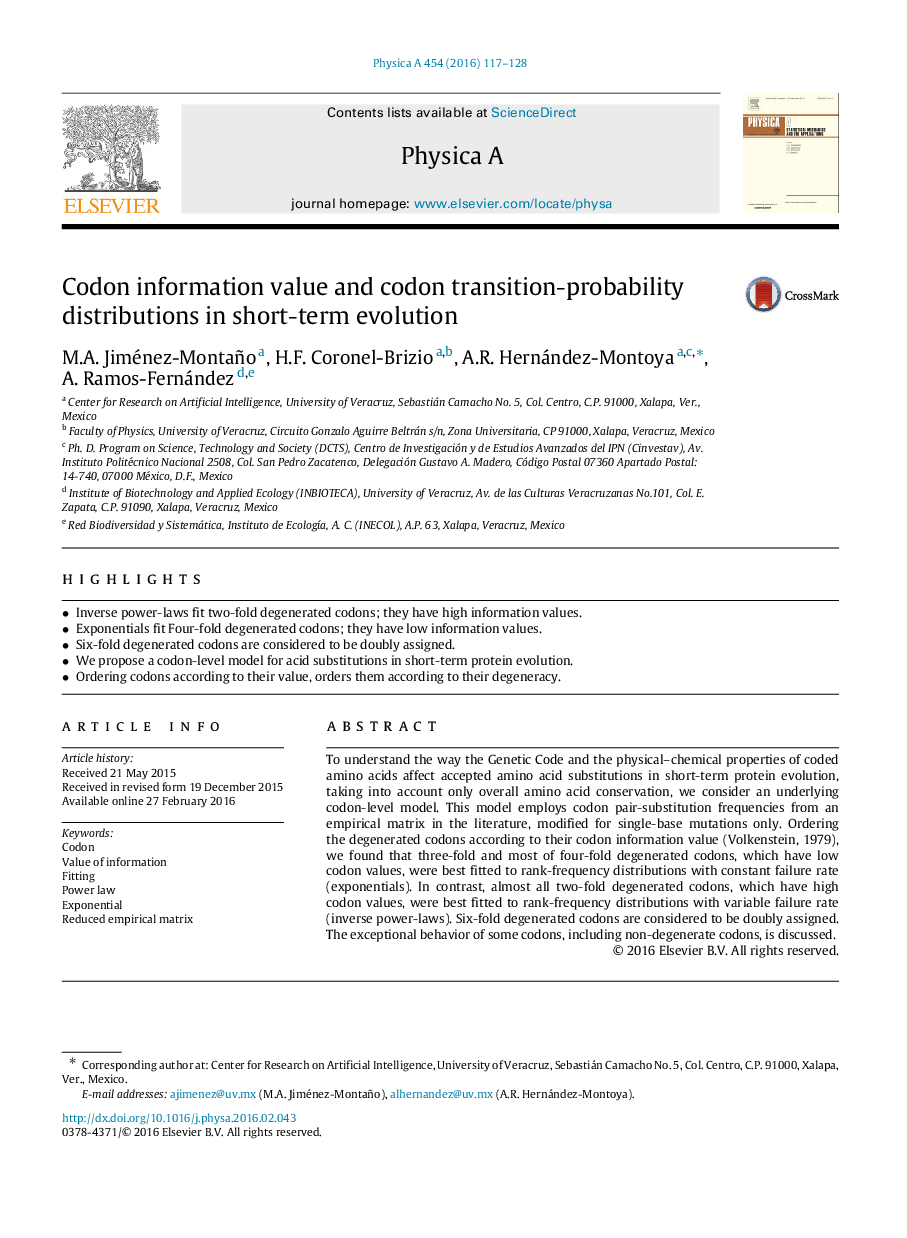| Article ID | Journal | Published Year | Pages | File Type |
|---|---|---|---|---|
| 976523 | Physica A: Statistical Mechanics and its Applications | 2016 | 12 Pages |
•Inverse power-laws fit two-fold degenerated codons; they have high information values.•Exponentials fit Four-fold degenerated codons; they have low information values.•Six-fold degenerated codons are considered to be doubly assigned.•We propose a codon-level model for acid substitutions in short-term protein evolution.•Ordering codons according to their value, orders them according to their degeneracy.
To understand the way the Genetic Code and the physical–chemical properties of coded amino acids affect accepted amino acid substitutions in short-term protein evolution, taking into account only overall amino acid conservation, we consider an underlying codon-level model. This model employs codon pair-substitution frequencies from an empirical matrix in the literature, modified for single-base mutations only. Ordering the degenerated codons according to their codon information value (Volkenstein, 1979), we found that three-fold and most of four-fold degenerated codons, which have low codon values, were best fitted to rank-frequency distributions with constant failure rate (exponentials). In contrast, almost all two-fold degenerated codons, which have high codon values, were best fitted to rank-frequency distributions with variable failure rate (inverse power-laws). Six-fold degenerated codons are considered to be doubly assigned. The exceptional behavior of some codons, including non-degenerate codons, is discussed.
